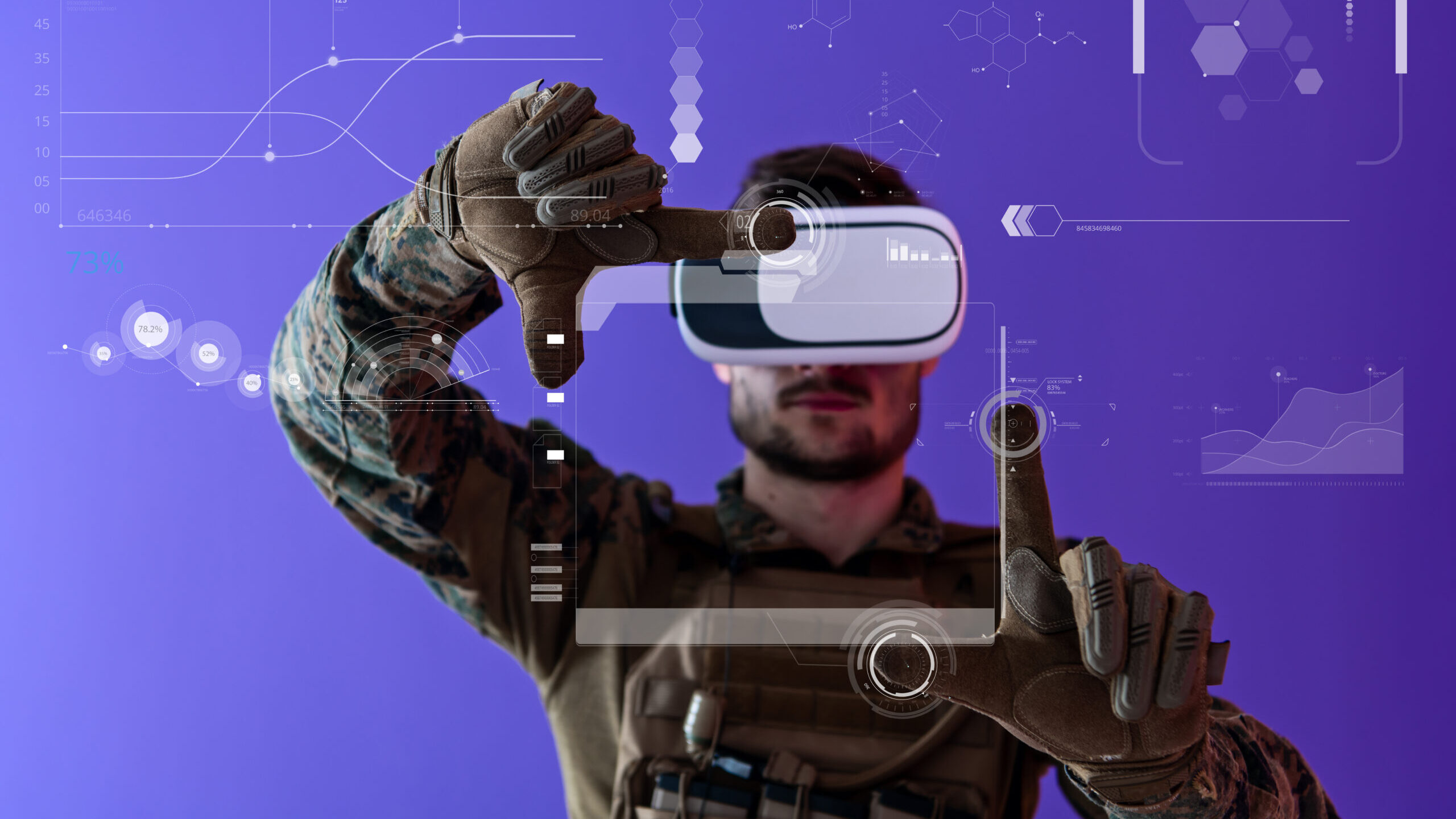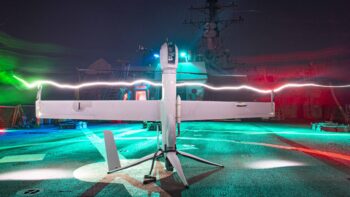
Modern warfare futuristic soldier using virtual reality glasses on purple background as concept of artificial intelligence on Hud screen display (Getty images)
WASHINGTON — Army Futures Command is going to be “very focused on human-machine integration” in the next year, one of several research and development (R&D) “seeds” the service is planting, Gabe Camarillo, the service’s under secretary said today.
“And as we continue to work on automating some of our systems, for example, on logistics and supply, and experiments with robotic combat vehicles, we’re also trying to understand the relationship between those platforms, and the soldiers and operators who use them,” Camarillo said at the Potomac Officers Club’s Army Summit.
“And that’s going to be a big focus from Army Futures Command over the next year, relying more heavily on armed and unmanned combat vehicles for things potentially like reconnaissance and delivery, in order to keep the soldier safer,” he added.
But even if the service gets its R&D efforts right in that space, there’s still the question of how soldiers will be integrated with machines and how autonomous systems will be employed, he said. Those are questions that the service hopes to answer in fiscal 2024.
“I think what I’m trying to say also is that we want to remove — or move past I should say — the mindset where all of these autonomous systems are a bolt-on capability, and ensure that they’re adequately integrated across our formations,” he said. “And AFC is going to lead the charge on that.”
Other R&D focus areas in FY24 include software applications and energetic materials, or chemicals found in weapon systems, a key area of value for the Army.
“And this requires us to work with propulsion engineers, or chemists, and others to extend the range of our long range fires, decrease flight times, and all with an understanding that different propellants work best at different temperatures,” Camarillo said. “And the challenges of future propulsion are just one of the concrete examples of where we need to invest in some R&D capabilities to give us even more options as we look ahead for the army of 2040.”
Meanwhile, Camarillo said that the service’s digital engineering strategy is still in development. In May, Jennifer Swanson, deputy assistant secretary of the Army for data, engineering and software, told Breaking Defense how the service wants to move from manual processes to an all-digital environment and that the forthcoming strategy will help to supercharge acquisition.
At the Army Summit, Camarillo said the strategy won’t be selecting a specific digital engineering tool or mandating its use across the service, but looking more broadly at diverse solutions.
“It is creating the conditions, the upskilled workforce, the business processes, as well as working with all of the multitude of vendors that develop the capabilities, giving them our needs, such that we can through standards and evolution of these tools over time, make them an integral part of how the army does modernization,” he said.






















